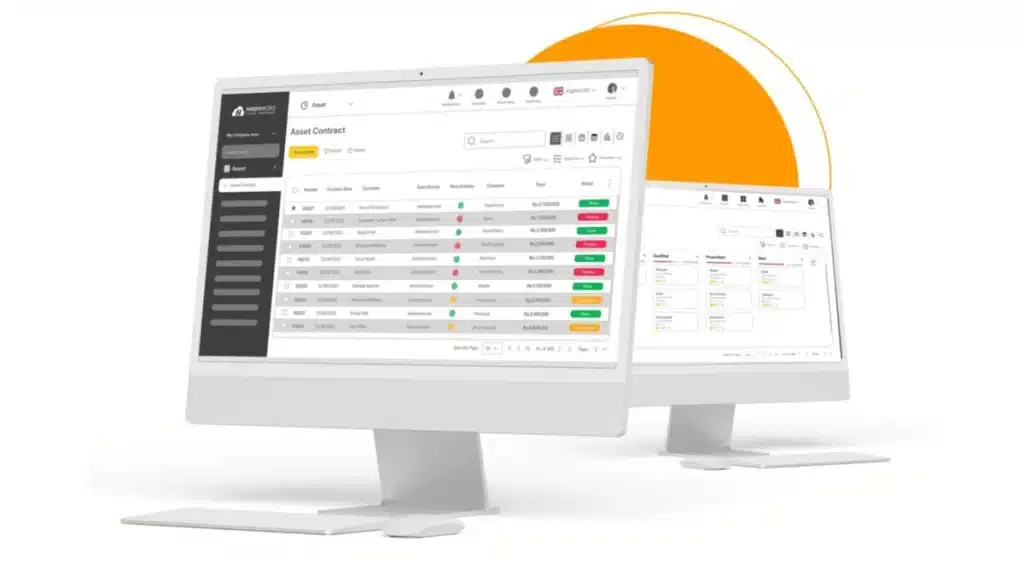We both know you could grow your business faster, but asset management challenges keep holding you back. Every delay, breakdown, or unexpected cost takes away valuable time and money, making it harder to reach your goals.
Effective asset management is a must for businesses in the Philippines. Staying competitive, keeping expenses low, and avoiding setbacks all depend on managing assets well. The right approach makes handling those issues easier, letting you focus on growth.
Ready to take control? Let’s learn how to handle asset challenges and watch your business run smoothly and efficiently!
Key Takeaways
|
Table of Content
Content Lists
Why are Asset Management Challenges Important to Know?

Understanding the challenges in asset management is essential for business owners aiming to keep control over their resources. By identifying potential issues early, business owners can make better decisions. This awareness can significantly impact the long-term success of Filipino businesses.
Some reasons why understanding these challenges is important are:
- Informed Decision-Making: Knowing potential issues allows for proactive, well-informed choices that help streamline operations and reduce costs.
- Prioritizing Resources: Awareness of challenges helps business owners focus resources on critical areas, minimizing waste and maximizing returns.
- Risk Mitigation: Anticipating challenges enables businesses to address risks before they escalate into costly setbacks.
- Competitive Advantage: Effective asset management gives businesses an edge by minimizing downtime and improving productivity.
- Supporting Growth: A well-managed approach ensures businesses can scale smoothly and respond to changing demands.
With these advantages, Filipino businesses can maintain smooth operations and minimize disruptions. This proactive approach not only prevents financial losses but also supports overall growth and competitiveness in the market.
1. Make Sure Assets are Visible and Easy to Track
One of the biggest challenges in asset management is maintaining asset visibility and ensuring they are easy to track. Real-time monitoring allows businesses to know the condition of their assets at any given time.
In the Philippines, where industries like logistics and manufacturing rely heavily on asset tracking, implementing a reliable tracking system can make a big difference in efficiency and accountability.
2. Planning Maintenance and Preventing Downtime
Maintenance planning is critical for reducing unexpected downtime, leading to productivity losses and higher costs. By scheduling maintenance tasks proactively, businesses can prevent issues that would otherwise interrupt operations.
For example, factories and transport companies in the Philippines can benefit greatly from preventive maintenance strategies, helping them avoid costly repairs and extended downtimes.

3. Managing Costs and Controlling Expenses
Effective cost management is essential for any business, particularly when dealing with assets that require frequent maintenance or replacement. Monitoring repair and maintenance expenses closely helps businesses stay within their budgets, reducing the risk of unexpected costs.
Using warranties wisely and prioritizing cost-effective repairs are also essential tactics for controlling expenses. For Philippine businesses, effectively using warranties and keeping repair costs manageable can be the difference between profitability and overspending.
4. Meeting Regulations and Reducing Risks
Ensuring assets meet safety and compliance standards is a must for businesses. Compliance with local regulations protects the company from legal issues, fines, and reputational damage.
Risk management is also a crucial part of asset management, as it protects people, assets, and sensitive information. By implementing strategies to manage risks effectively, companies can minimize the chances of accidents, data breaches, or other operational risks.
5. Organizing Data and Avoiding Errors
Data management plays a pivotal role in asset performance management, as it enables accurate tracking and decision-making. Reducing errors caused by manual data entry or outdated systems can significantly improve business operations.
Many Philippine companies, especially those transitioning to digital platforms, face challenges in managing large volumes of data accurately. Adopting reliable data management systems, such as asset management system, can reduce errors and maintain consistency.
6. Making Smart Decisions for the Future
Aligning asset management with long-term business goals allows companies to make smarter decisions regarding repairs and replacements. Business owners can optimise their investments by assessing asset lifecycles and planning for future needs.
Informed decision-making, particularly around repairs and replacements, is also vital for ensuring assets are used effectively without unnecessary spending. Regularly assessing will help businesses prioritize necessary investments and avoid unnecessary replacements.
7. Increasing Asset Value Over Time
Maximizing the value derived from each asset is an important goal in asset management. Effective use and consistent tracking throughout an asset’s lifecycle allow businesses to get the best returns on investment.
Tracking assets across their lifecycle also helps companies make informed decisions about selling, upgrading, or retiring assets. By focusing on lifecycle management, businesses can optimize asset usage, increasing overall value and reducing costs associated with underutilized or inefficient assets.
Overcome Asset Management Challenges with HashMicro’s Software
 Overcoming asset management challenges becomes much easier with HashMicro’s asset management software. This system provides effective tools to address common issues like tracking, budgeting, and maintenance. Filipino businesses can benefit from features that simplify asset management, saving time and reducing costs.
Overcoming asset management challenges becomes much easier with HashMicro’s asset management software. This system provides effective tools to address common issues like tracking, budgeting, and maintenance. Filipino businesses can benefit from features that simplify asset management, saving time and reducing costs.
Here are some features of this software that will help addressing those challenges:
- Comprehensive Cost Reporting: Track and report all asset-related costs, helping you manage budgets and avoid overspending.
- Maintenance Budgeting: Set and monitor maintenance budgets to prevent unexpected expenses and keep repairs within planned costs.
- Asset GPS Tracking: Locate assets in real-time, ensuring nothing goes misplaced and improving overall visibility.
- Barcode Asset Stock Take: Quickly and accurately track inventory and conduct stock takes, reducing errors and improving efficiency.
- QR Code Scanning for Facility Requests: This allows employees to submit facility requests easily, making maintenance management smoother and faster.
With these targeted features, HashMicro’s software provides practical solutions to the most common asset management challenges. By simplifying tracking, budgeting, and maintenance, businesses can operate more efficiently and minimize inventory loss, preventing disruptions to their operations.
Conclusion
Overcoming asset management challenges is crucial for achieving business efficiency and growth. With an asset management system like HashMicro, businesses can easily tackle these challenges through features like real-time tracking and preventive maintenance.
Using an asset management system allows Philippine businesses to stay competitive and focus on sustainable growth. Business owners can secure a strong foundation for future success by ensuring assets are managed effectively. Ready to see the impact? Try the free demo and see how it tackles these challenges!
FAQ Around Asset Management Challenges
-
What’s the major challenge in the asset management industry?
A major challenge in asset management is tracking and maintaining assets efficiently across locations. Inaccurate data or poor visibility can lead to increased costs and lost productivity.
-
Why are asset managers struggling?
Asset managers often struggle with balancing budget constraints while ensuring asset upkeep. Limited resources and complex inventories make it difficult to manage assets effectively.
-
What is the primary challenge of strategic asset management?
Asset managers often struggle with balancing budget constraints while ensuring asset upkeep. Limited resources and complex inventories make it difficult to manage assets effectively.




































